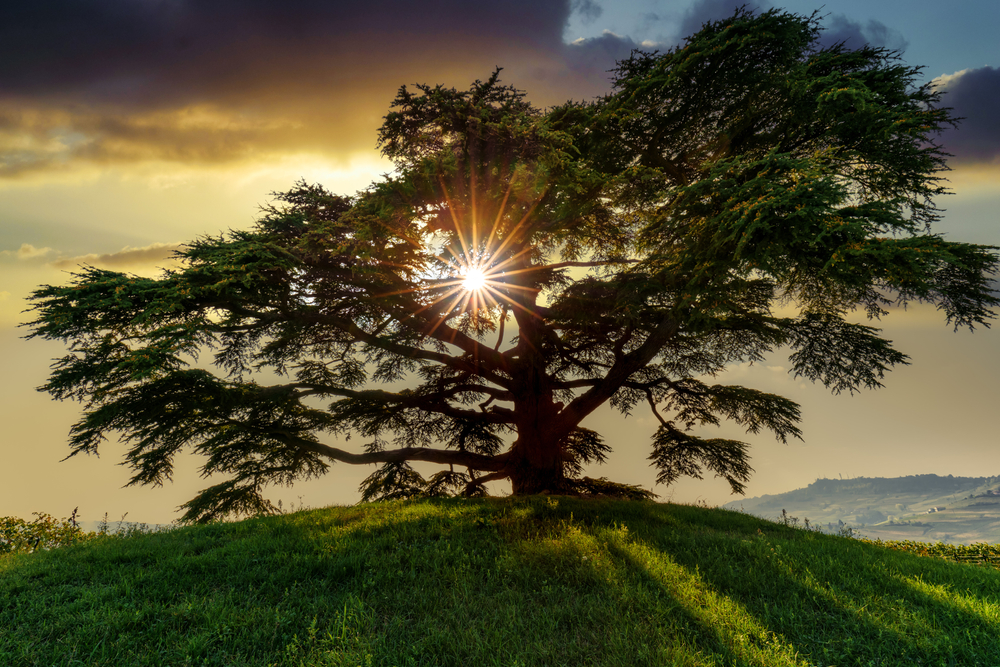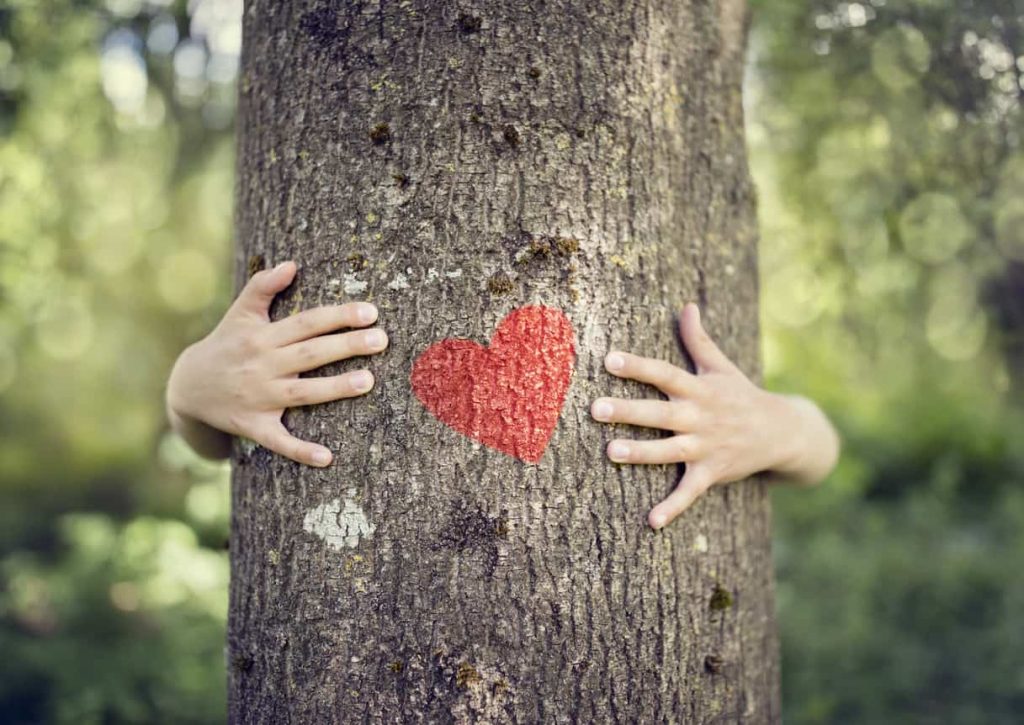

Elder of Sound of Heaven Church
I recently watched a couple of documentaries regarding the work of two forestry ecologists studying the various abilities of trees, including how they communicate. One doesn’t usually think much about trees; they’re just part of the landscape. After learning many astounding facts about them, I was prompted to look at some of the Bible’s numerous references to trees, including the well-known Cedar of Lebanon as it has come to represent strength and magnificence.
After all, nothing is coincidental with God, and God speaks in many ways. He had reasons for choosing trees when telling us how to please Him.
Ecologist Suzanne Simard spent 30 years researching forests in Canadian British Columbia and shared findings in her book entitled, Finding the Mother Tree. Ecologist Peter Wohlleben spent over 20 years working for the forestry commission in Germany before leaving to put his ecology ideas into practice, sharing his findings in the book entitled, The Hidden Life of Trees I am sure a search on the Internet will reveal more studies of trees since many fascinating facts have been revealed.
Trees are magnificent for many reasons. Most of us have paused to appreciate this awesome gift from God. Here are some interesting observations related to trees, including the revered Cedar of Lebanon tree, that you may have never heard before.
Simard discovered that Paper Birch and Douglas fir trees communicated through what scientists had already thought—below ground mutualistic symbiosis called a mycorrhiza, which literally means “fungus root,”—basically mushrooms.
Their stem’s fungal threads form mycelium, which infects and colonizes the roots of all the trees and plants. This dense web of mycelium connects trees of different species creating an underground network of fungi that resembles the neural networks in the brain, and has even been compared to the complex web of the Internet. Simard says, “Trees share information that actually is important to the health of the whole forest.”
Trees are often linked to each other via an older tree labeled by Simard as a “mother” or “hub” tree.
She decided to set up an experiment. She grew mother trees with their own seedlings and the seedlings of other species, and it proved that trees recognize their own offspring. Who would have guessed?
Mother trees nurtured their seedlings with bigger mycorrhizal networks, sent them more carbon below ground, and mother trees even reduced their own root growth to make elbow room for their seedlings. Trees don’t compete, but actually cooperate with each other—plant and fungal cooperation—called mycorrhizal.
When mother trees are injured or dying, they also send messages of wisdom on to the next generation of seedlings. Isotope tracing was used to trace carbon moving from an injured mother tree down her trunk into the mycorrhizal network and her neighboring seedlings. Not only was carbon present, but also defense signals to ward off injury and disease, which increased resistance of those seedlings and even addressed future stresses. The mother trees really communicated.
In addition to warning each other of danger, Simard says trees have been known to share nutrients at critical times to keep each other healthy. They will do anything to help seedlings survive. Young trees, specifically Beech Trees, could grow as high as 18 inches per season. However, according to the scientists, the mother tree will actually hinder seedling growth because trees should grow slowly to ensure attainment of old age.
The mother trees promote slow growth by shading young trees using their enormous limbs and foliage to only allow a small amount of sunlight to reach them so just enough photosynthesis can keep them alive while still slowing their growth. Amazing, isn’t it?
While it may seem natural for insects to feed on leaves of trees, the tree is aware of the attack, and the tissue surrounding the damage sends out electrical signals that travel to nearby trees. In one study, Simard watched as a Douglas fir injured by insects appeared to send chemical warning signals to a Ponderosa Pine growing nearby. The pine tree then produced defense enzymes to protect itself against the attacking insects.
rees actually complain when they’re thirsty, just like we might. But since they can’t express their needs in words, they “scream” by creating vibrations through their trunk.
According to scientists at the Swiss Federal Institute for Forest, Snow, and Landscape Research, trees scream when there’s an interruption in the flow of water from their roots to their leaves. This can only be detected at ultrasonic levels not heard by human ears. I’m somewhat glad that we don’t hear them. A walk in the forest might not be as relaxing as we might hope.
Because trees have energy flowing through them, tree hugging has become a popular practice based on identified benefits derived from their energies. Author, Matthew Silverstone, presents confirming evidence in his book entitled, Blinded by Science, that trees can provide healthful benefits including positive effects on mental illnesses, Attention Deficit Hyperactivity Disorder (ADHD), concentration levels, reaction times, depression, and alleviating headaches. So, next time you’re feeling down, try getting close to a nearby tree, and maybe try a hug—probably best done when no one is around. God’s blessings do come in many packages, and He provides so much at no monetary cost.

As I mentioned at the onset of this article, we will find many instances in God’s Word where a tree, like the Cedar of Lebanon, a Palm tree, a vine, or even branches are used to represent mankind and the attributes God imparts. I don’t think that is a coincidence, and that’s why I think we need to look a little deeper into His Word for better understanding.
The supernatural presence of God is a vital part of every living thing. Attributes given to His other creations are just as godly as those we receive. The correlation is inescapable.
God’s use of trees to symbolically represent humankind is seen clearly in Matthew 7: 17-20
17 In the same way, every good tree bears good fruit, but the bad tree bears bad fruit. 18 A good tree cannot bear bad fruit, nor can a bad tree bear good fruit. 19 Every tree that does not bear good fruit is cut down and thrown into the fire. 20 Thus you will know them by their fruits.
Matthew 7:17-20
This Scripture reveals that you can only have two basic kinds of trees in God’s perspective. This can be applied to nature as well. Some trees are fruit bearing and others are not; some bear good fruit, others not so good, and of course within each category, there are many different varieties—many unique individuals.
The same applies to mankind. As we explore deeper, we will see how we can be identified with the kinds of trees that please God—those that bear “good” fruit.
In the previous Scripture, Mt 7: 17-20, Jesus is speaking of a person’s basic character, and it refers to righteousness.
Here are 2 more scriptures to consider.
3He [the believer] shall be like a tree planted by the rivers of WATER,* that brings forth its fruit in its season, whose leaf also shall not wither; and whatever he does shall prosper.
Psalm 1:3
7“Blessed is the man who trusts in the Lord, and whose hope is the Lord. 8 For he shall be like a tree planted by the WATERS,* which spreads out its roots by the river, and will not fear when heat comes; but its leaf will be green, and will not be anxious in the year of drought, nor will cease from yielding fruit [good fruit of course].
Jeremiah 17:7-8
*The original word used for WATER(S), found in the Bible Concordance is the Hebrew word, # 4325 Maý-im = fig = juice meaning human seed [to create life]. Waters create, sustain, and prosper life and fruitfulness. The trees and all living things need them.
Ps 92:12-14 declares,
12 The righteous shall flourish like a palm tree, He shall grow like a CEDAR IN LEBANON.* 13 Those who are planted in the house of the Lord shall flourish in the courts of our God. 14 They shall still bear fruit in old age; they shall be fresh and flourishing,
Psalm 92:12-14
The CEDAR IN LEBANON represents Character—a Righteous Man, and it has many qualities worth observing.
As we keep focusing on trees that please God, Matthew 7: 17-20 bears repeating.
17 In the same way, every good tree bears good fruit, but the bad tree bears bad fruit. 18 A good tree cannot bear bad fruit, nor can a bad tree bear good fruit. 19 Every tree that does not bear good fruit is cut down and thrown into the fire. 20 Thus you will know them by their fruits.
Matthew 7:17-20
As you read earlier, trees in nature actually cry out for water. They can only be heard using ultrasonic equipment. Well, we can cry out, and our cries can also be heard—not ultrasonically, but supernaturally. God hears every cry, and He wants us to have the sustaining waters of life that produce abundant, good fruit.
In John 7:38, Jesus says
38 “He who believes in Me, as the Scripture has said, out of his heart will flow rivers of living water.”
John 7:38
The original Greek words found in the Bible Concordance help define the meaning of LIVING WATER(S)—# 5204 hoó-datos is derived from the Greek word # 5205 hoo-et-ós, referring to rain. Rain comes from above, and is filled with life. The Living Water we receive from above is depicted as the Lord Himself in Jer 17:13—as the Lord; the fountain of living waters. In Jer 5:24, we read, it is the Lord “Who gives rain, both the former and the latter, in its season. He reserves for us the appointed weeks of the harvest.”
So, What Does This All Mean To Us?
Just as there is more to trees than meets the eye, there is more God sees in us than meets the eye. He refers to us as trees in His Word, but what trees are pleasing to God? A brief review reveals that His Word is very clear.
We can only be the trees God depicts in His Word, when we stay in His presence and remain nourished by the Living Waters He provides. The Old Testament reference is to rivers of water—the trees are planted near rivers and depend on the rain, which is external.
In the New Testament, Jesus refers to Living Waters meaning the Holy Spirit within, who provides Living Waters that spring forth from our hearts. They are like the rain, but these waters are internal.
As mentioned earlier, the Hebrew word for water in the Old Testament refers to propagation or growth from an external source (translated as human seed) fertilizing or giving life to the tree depicted as the righteous man.
The Greek word for Living Waters in the New Testament refers to Living Waters—the Holy Spirit, so the life-propagating growth in the New Testament tree is accomplished through an internal spiritual source. This internal source did not exist until Jesus, the Messiah appeared, fulfilled his mission, died, rose again, returned to the Father, and gave us His Holy Spirit to dwell within us. Amen!
So, How Do We Compare to the Righteous Tree God Defines
The Choice is Always Ours!
We can be Spirit-filled, fruit-bearing trees or withering, drought-fearing, fruitless trees.
As we look back on the Old and New Testament Scriptures, the difference in sustaining the tree that pleases God [righteous man] is not what we get externally, but what is already in us!!! It is freely given to us when we recognize and accept the source of life-giving growth through Jesus and receive His Holy Spirit.
When God looks at us, He sees a good or corrupt tree. Remember, having the right source of life-giving growth will produce GOOD fruit—ALWAYS! We have no reason to be seen as a corrupt tree. Remember, it’s our choice.
18 A good tree cannot bear bad fruit, nor can a bad tree bear good fruit.
Matthew 7:18
Are you like the New Testament tree relying on Living Waters received from the source of all life dwelling within you?
If You Are Unsure, Ask God to . . .
Next time you see a tree, remember how God enables it to prosper, multiply, and remain fruitful, and although it might rely on much that is external, remember that God has enabled you as the tree described in His Word, to flourish through His Holy Spirit living internally. Fruitfulness is your promise, and it makes you the Good Tree that pleases our Heavenly Father.
Bible references are taken from the NKJV
Brief Bio
Russ is Co-founder and Senior Pastor at Christiangram Ministries, Inc., and thirty-two years of ordination were celebrated on November 14, 2021. His music visitation ministry, founded in 1988 by he and his wife, Rose (now with the Lord), has touched multitudes through one-on-one visitation, numerous diverse public events, inspirational songs, preaching, prayer, and personal outreach. He also served as Assistant Pastor for Walk in Love for Jesus Church, North Bellmore, NY for nearly seven years. The ministry is currently in process of reconfiguration to reach out to the spiritual needs of police officers, and leadership will be assumed by his son, Mark.
© Sound of Heaven Church 2011- 2024